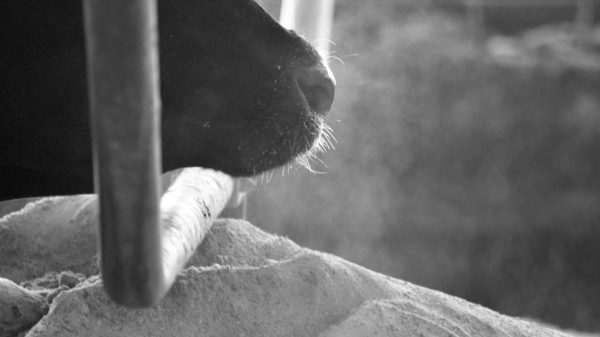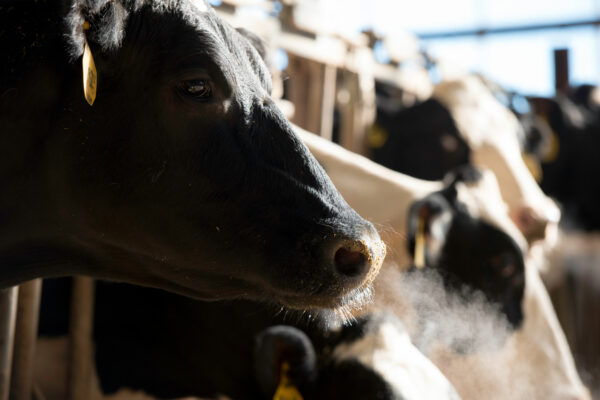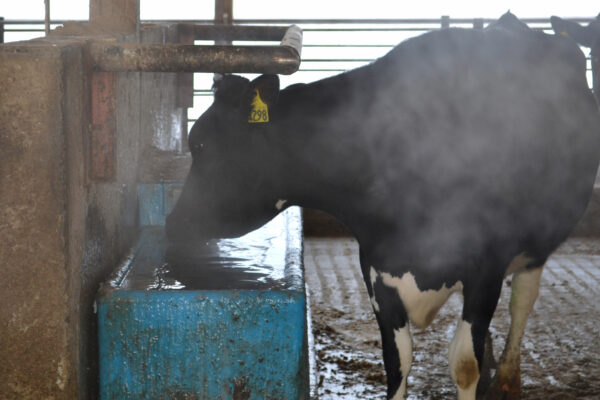Don’t overlook cold stress
Although often overlooked, cold stress is an event that can have a significant negative impact on dairy and beef cows alike. Attention to climatic conditions typically centers on heat stress when evidence of overheating and dehydration are easier to identify. But cold stress, typically accepted as being <32°F (0°C), has equally negative consequences on health and performance when not addressed.
Cold Stress Increases Energy Requirements
There are many factors and conditions that can contribute to cold stress events in livestock including:
• Wet environments
• Freezing temperatures
• Wind
• Lack of shelter
Acting independently or in concert with one another, these cold stress contributions can impact cows in several ways including:
• Altering behavior
• Reducing body condition
• Increasing nutrient requirements
• Contributing to lower feed and water intakes
• Compromising performance

Cold stress can negatively affect dry matter intake (DMI) and water consumption. Decreased DMI coupled with increased energy requirements necessary to maintain basal body temperature, work in opposing directions and can negatively impact gut health and production parameters.
Energy requirements for both body weight maintenance and for production demands add to dietary energy requirements (up to 40% more during extreme cold) and create a necessity for higher feed intake. Therefore, any interruptions in feed intake can adversely affect production along with body condition.
During cold stress events, additional dietary energy is required for
• Body weight maintenance
• Production demands
• Meeting increased metabolic requirements
Dietary reformulation may be necessary to minimize economic losses during periods of intense cold.
As temperatures fall in the winter months, REMEMBER at 32°F (0°C) a cow’s productivity and efficiency is being affected.
Effect of Cold stress on Body Condition Score
Body condition score (BCS) is a subjective measure used to indirectly estimate body fat percentage. Fat possesses insulative properties and thereby can be a predictor of susceptibility to cold stress.
Transitioning dairy cows in particular, will rapidly metabolize fat tissue in an effort to support milk production, and are most susceptible to cold stress challenges. Interestingly, even fat deposits from the digital foot pad (responsible for cushioning body weight when walking or standing) are also mobilized during the transition period. As such, sore feet can reduce the cows willingness or ability to access feed, resulting in reduced intakes and potentially contributing to other health related challenges.
Cows with low body condition scores can also have more difficulty with the following:
• Calving
• Lower colostrum quality
• Longer recovery
• Poor bred back

Furthermore, calves born from cows with a lower BCS are more apt to be weak at birth and more susceptible to disease due in part the aforementioned decreased colostrum quality.
Cows with a higher BCS are less severely impacted by cold stress. While body fat is the primary insulating element, a thick, dry hair, coat allows heat to be trapped creating an insulative blanket. When the hairs become wet they mat and tend to lie flat allowing the heat to escape, thereby increasing animal susceptibility to cold stress. Wetness and wind should be avoided by providing shelter and wind breaks where cows can find relief. Clean, dry bedding also helps insulate cows from the frozen ground.
Nutrient Enriched Water can Help
During the hot and dry summer months it is easy to imagine cows requiring abundant water intake. However, even in the cold of winter contributing factors to dehydration include:
• Respiration
• Evaporation
• Urination
Along with high quality, energy dense feedstuffs, it is essential to offer cows clean, fresh water 2-3 times daily and ensure it is thawed at all times. Adding Bovine BlueLite® to either the feed or water, helps support energy requirements and also helps maintain essential electrolyte nutrition necessary for optimized hydration.
Temperature extremes – whether hot or cold – can reduce milk production and general cow health and performance. Good management, solid nutrition, and proper hydration status is critical for optimum outcomes.

